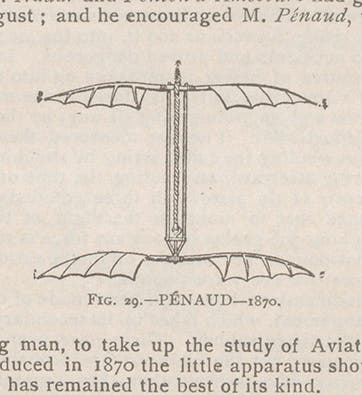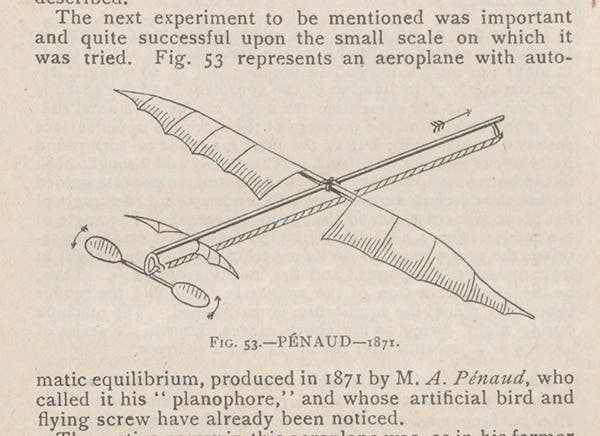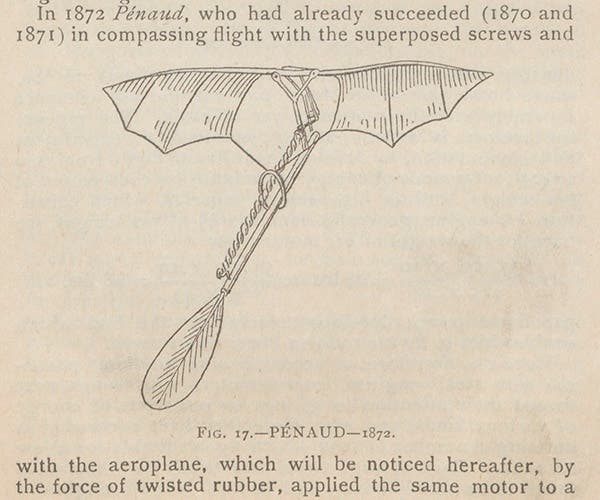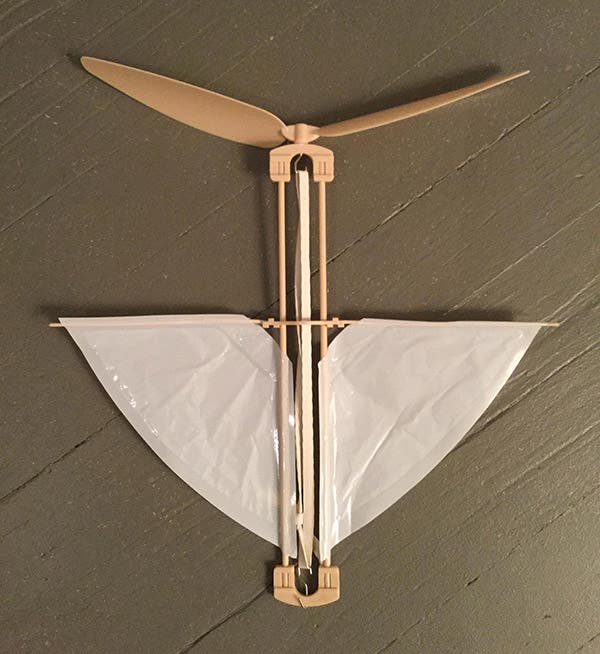Scientist of the Day - Alphonse Pénaud
Alphonse Pénaud, a French aviation pioneer, was born May 31, 1850. In the early 1870s, Pénaud began building model aircraft powered by twisted rubber cords, the first to use what we would call a rubber-band motor. In 1871, he flew a model aircraft in the Tuileries for the Aeronautical Society of France. It had a tail stabilizer in front of a rear propeller, and both wings and stabilizer were arched in such a way that the model was essentially stable – really the first heavier-than-air powered aircraft to have such properties. It flew for 11 seconds and covered 130 feet, and was a first on many counts – most notably, it was the first powered aircraft of any size to achieve stable flight. He called his model the “Planophore.” Octave Chanute later discussed it in detail and pictured it in his book, Progress in Flying Machines (1894; second image).
Pénaud made a number of other flying machines, including some ornithopters (flapping machines; third image), but his most famous creation is undoubtedly his model helicopter. It had two counter-rotating propellers for stability, one below and one above. Both propellers were powered by twisted rubber cords that ran between the propellers (first image). He flew these successfully in Paris, and whether he made models for sale or someone else did, we do not know, but a Pénaud rubber-band-powered model helicopter was given to young Wilbur and Orville Wright by their father in 1878, when Wilbur was 11 and Orville was 7. They were fascinated by what to them was a flying toy, and both later claimed that the Pénaud helicopter inspired them to pursue their investigations into human flight.
Pénaud drew up plans for full-sized flying machines, but he was unable to secure either interest or funding. In despair, and having suffered for some years from osteotuberculosis, Penaud took his own life on Oct. 22, 1880. Before his death, he gave all his technical drawings to Henri Giffard, a noted balloonist. Giffard took his own life two years later, for unrelated reasons.
Pénaud helicopters are easy to make, and are also available in kit form, and when you see one fly, you can well understand how the Wright brothers might have been instantly captivated by the sight. It is unfortunate and unfair to Pénaud that they are often sold under the name “Wright Bat.” It is also unfortunate that Pénaud did not live to see what he inspired. Pénaud would have been 53 years old when the Wright Flyer was launched from Kitty Hawk in 1903. The famous first flight covered 120 feet in 12 seconds, not much different from the first flight of the Penaud's “Planophore” in 1871.
Dr. William B. Ashworth, Jr., Consultant for the History of Science, Linda Hall Library and Associate Professor, Department of History, University of Missouri-Kansas City. Comments or corrections are welcome; please direct to ashworthw@umkc.edu.







![Using an astrolabe to measure the depth of a well, woodcut in Elucidatio fabricae vsusq[ue] astrolabii, by Johannes Stöffler, 1513 (Linda Hall Library)](https://assets-us-01.kc-usercontent.com:443/9dd25524-761a-000d-d79f-86a5086d4774/a998eb50-55d2-4a88-ace2-a50aa5fa86e7/Stoffler%201.jpg?w=210&h=210&auto=format&fit=crop)

